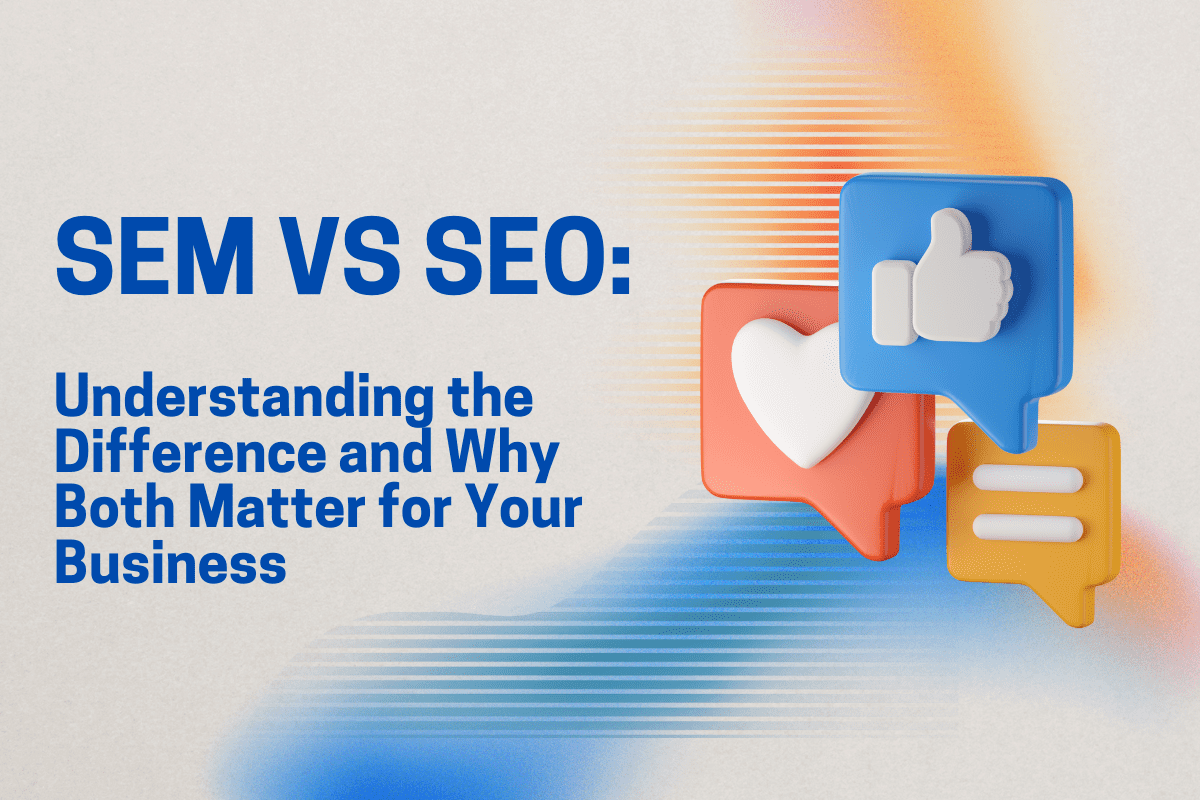In the world of digital marketing, two acronyms are often at the forefront of any strategy: SEO (Search Engine Optimization) and SEM (Search Engine Marketing). Though sometimes used interchangeably, they encompass different tactics and have distinct roles in boosting online visibility. Understanding their differences and how they complement each other is crucial for any business aiming to enhance its online presence.
SEO: The Art of Organic Growth
SEO is focused on improving a website’s organic (non-paid) visibility on search engine results pages (SERPs). It involves optimizing various elements of your website, including content, structure, and performance, to rank higher in searches for relevant keywords.
Key Components of SEO:
Content Quality: Creating relevant, useful content that answers the needs of your target audience.
Keywords: Researching and using phrases that your potential customers use to search for your products or services.
On-site Optimization: Enhancing website elements like meta tags, headings, and internal links.
Off-site Factors: Building quality backlinks from other reputable websites.
User Experience: Ensuring the site is user-friendly, mobile-responsive, and fast-loading.
SEM: Beyond SEO with Paid Advertising
SEM is a broader term that includes SEO but is mainly associated with paid search advertising. It’s about increasing a website’s visibility on search engines through paid methods, like Google Ads or Bing Ads.
Key Components of SEM:
Paid Search Ads: Creating and managing ads that appear on SERPs. Advertisers pay per click (PPC) on these ads.
Targeted Advertising: Customizing ads to target specific demographics, locations, and user behaviors.
Keyword Bidding: Competing for keywords that trigger your ads to appear in the paid search results.
Performance Metrics: Monitoring and adjusting campaigns based on metrics like click-through rates and conversion rates.
SEO vs SEM: The Main Differences
Cost: SEO primarily involves time and indirect costs, whereas SEM directly involves spending on ad campaigns.
Timeframe for Results: SEO is a long-term strategy with gradual results, while SEM can provide immediate visibility.
Control Over Positioning: SEM allows more control over how and where your ads appear, while SEO results are subject to search engine algorithms.
Sustainability: Traffic from SEO is sustainable as long as you maintain your rankings, but traffic from SEM stops when you pause your ad spend.
Should Your Business Use Both SEO and SEM?
Integrating both SEO and SEM in your marketing strategy is highly recommended for several reasons:
Comprehensive Visibility: Using both strategies ensures visibility both in the organic search results and the paid ad space.
Keyword Synergy: Insights from SEM can inform your SEO strategy and vice versa. For instance, high-performing keywords in PPC can be valuable for SEO content.
Market Dominance: Combining SEO and SEM can increase your overall share of the search results page, enhancing brand presence and credibility.
Adaptability: While building your SEO, SEM can provide immediate visibility and traffic, allowing for a balanced approach in your marketing efforts.
Better Insights: Together, SEO and SEM provide more data for informed decision-making and strategy refinement.
Conclusion
While SEO and SEM serve different purposes, they are complementary strategies in the digital marketing realm. SEO offers a foundation for organic growth and credibility, while SEM allows for quick, targeted visibility and traffic. Utilizing both ensures a well-rounded approach to search engine marketing, enhancing your ability to reach and engage your target audience effectively.
In summary, understanding the nuances between SEO and SEM and leveraging both strategically can significantly enhance a company’s online presence and success in the digital marketplace.



0 Comments